Ansiando la paciencia de la Esfinge (Esp/Eng)
Aprovecho la aparente calma de este fin de semana y esta serenidad que me aporta estar aquí con ustedes, familia bella de #HolosLotus, para verme en el espejo que traduce el tiempo. Allí, en la vitrina, en una pequeña colección de arte que conserva mi hermana, hay una réplica brillante de la Gran Esfinge de Guiza que cabe en mi mano, y viene a mi mente la serenidad de ese rostro que ha permanecido en silencio por más de 4500 años bajo el sol inclemente y las arenas movedizas del desierto de Egipto.
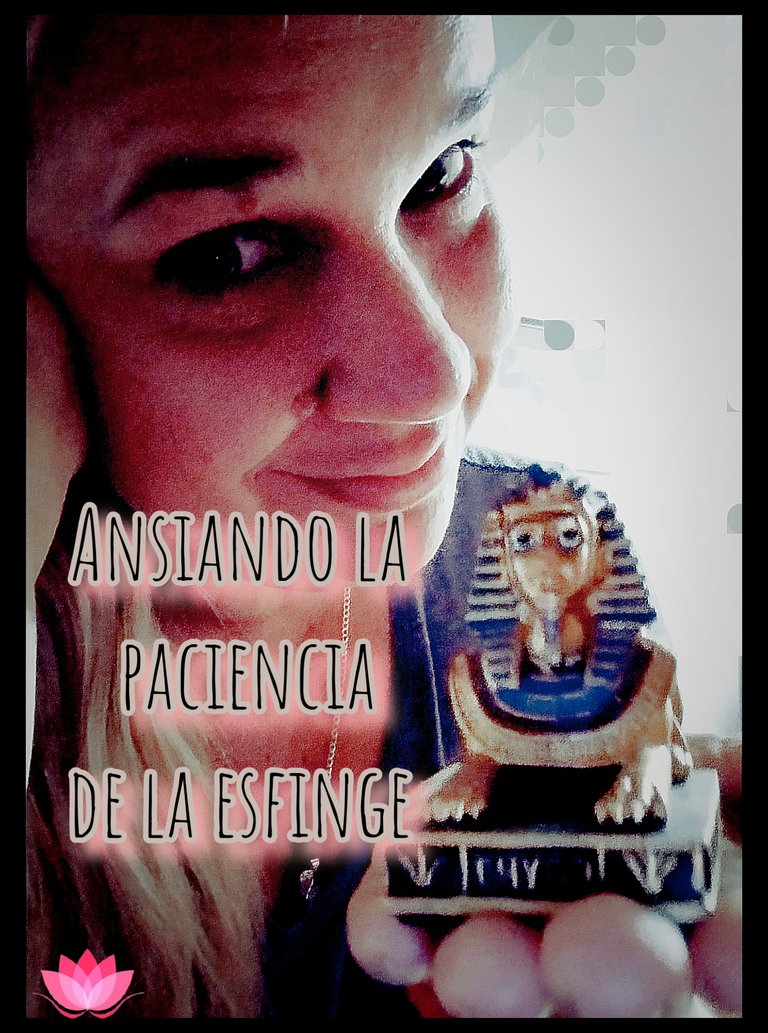
Me ha atacado algo similar a la envidia... ¿Quién pudiera tener la paciencia de la esfinge? Pero no la quietud del conformismo, sino la fortaleza de quien sabe que algunas cosas, las verdaderamente importantes, requieren tiempo, perseverancia y, sobre todo, calma ante la adversidad.
Como médica y neuróloga pediatra, como madre, como ciudadana que transita a diario entre el bullicio y las prisas de los demás, he aprendido que la paciencia no es pasividad, sino resistencia activa; algo así como la decisión de no claudicar ante la frustración, aunque el mundo parezca empeñado en ponernos a prueba.
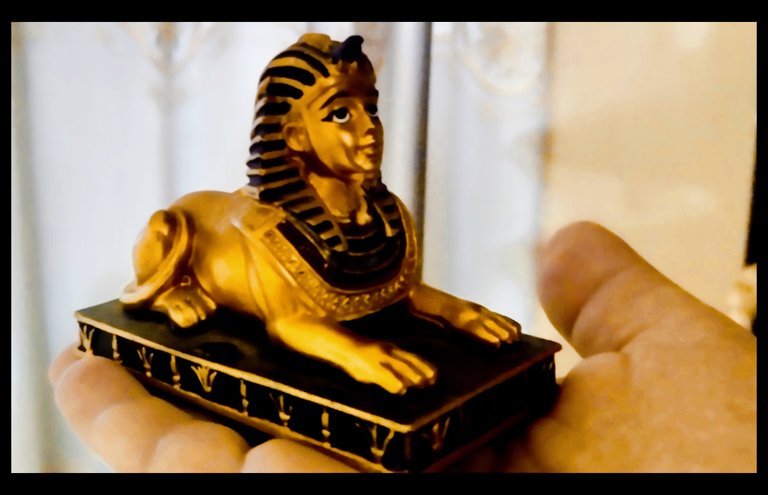
En mi consulta, una madre angustiada puede repetir la misma pregunta tres veces: "¿Y si el tratamiento no funciona?" Su temor es válido, y mi obligación es responder con la misma claridad la primera vez que la quincuagésima. La medicina, especialmente con niños, exige paciencia pedagógica. No basta con dar un diagnóstico; hay que sembrar comprensión.
Y entonces vuelvo a recordar a la Esfinge, que no habla, pero su presencia comunica eternidad. Nosotros, en cambio, debemos usar palabras hasta que alivien, hasta que sanen. La paciencia, en este caso, no es repetición, sino la construcción de confianza.
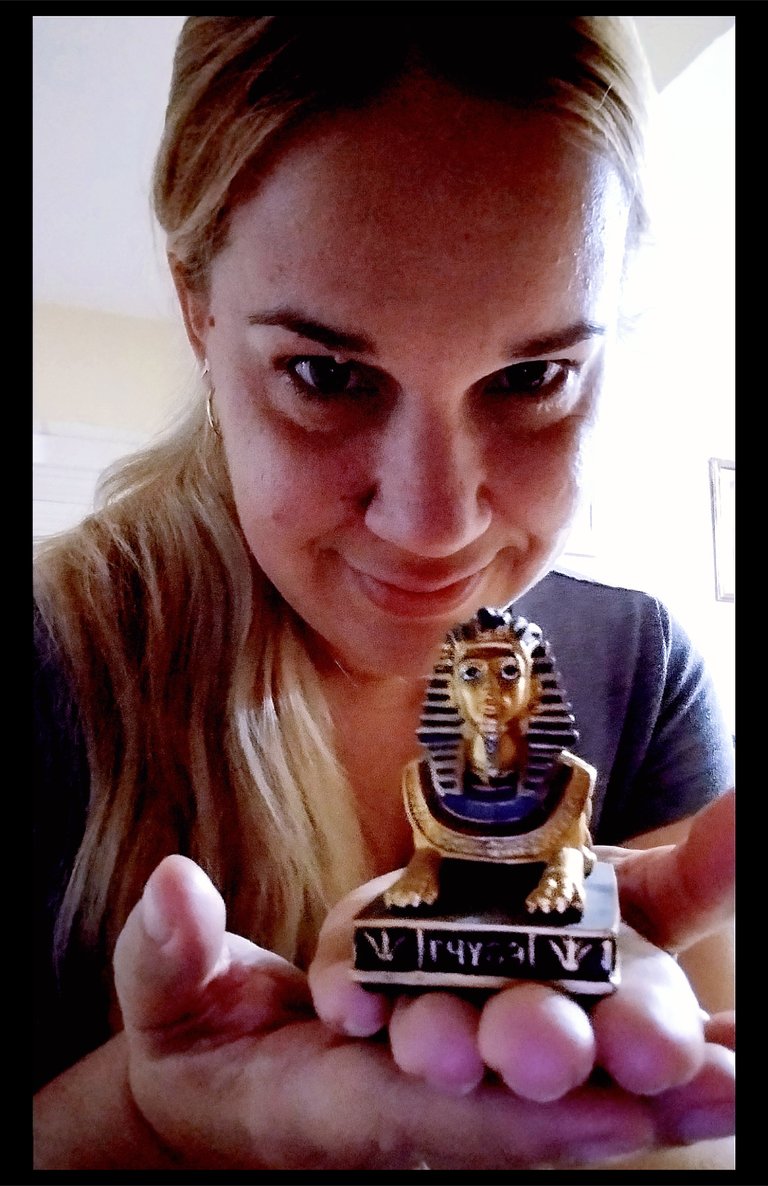
El transporte público es un termómetro del alma humana, más aún cuando alguien te empuja para subir primero y otro reclama un asiento. Allí, la impaciencia se contagia como un virus. Pero ¿qué ganamos con apurarnos?
Otra vez retorno a la Esfinge, que ha visto imperios levantarse y caer. Los faraones que la construyeron ya no existen, pero ella sigue ahí, recordándonos que el tiempo no se conquista con prisa, sino con presencia. ¿No es acaso mejor llegar tarde y en paz que llegar temprano con el corazón en llamas?
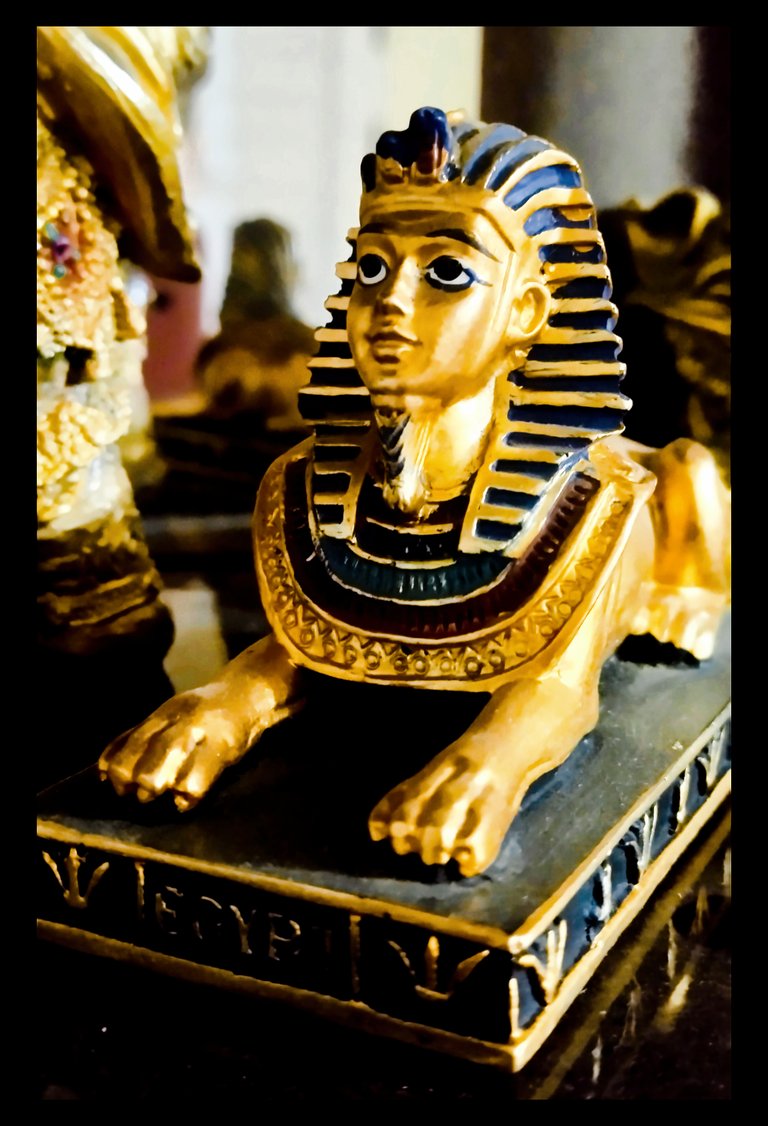
Mi hija de 12 años olvida con frecuencia la tarea, se distrae con el celular, cuestiona las reglas y sus maestros me llaman preocupados. Ahí, la paciencia se vuelve un acto de fe: confiar en que los límites puestos con amor hoy darán frutos mañana. Siempre he tenido la convicción de que educar es esculpir con delicadeza, como los artistas que tallaron la Esfinge: sin golpes brutales, pero con firmeza.
Los médicos también somos pacientes (valga la redundancia), porque hay días en que la fatiga gana, en que un diagnóstico se resiste o simplemente en que el cuerpo pide pausa. La Esfinge no se avergüenza de sus grietas; son marcas de su historia. Nosotros, en cambio, a menudo nos juzgamos por no ser infalibles.
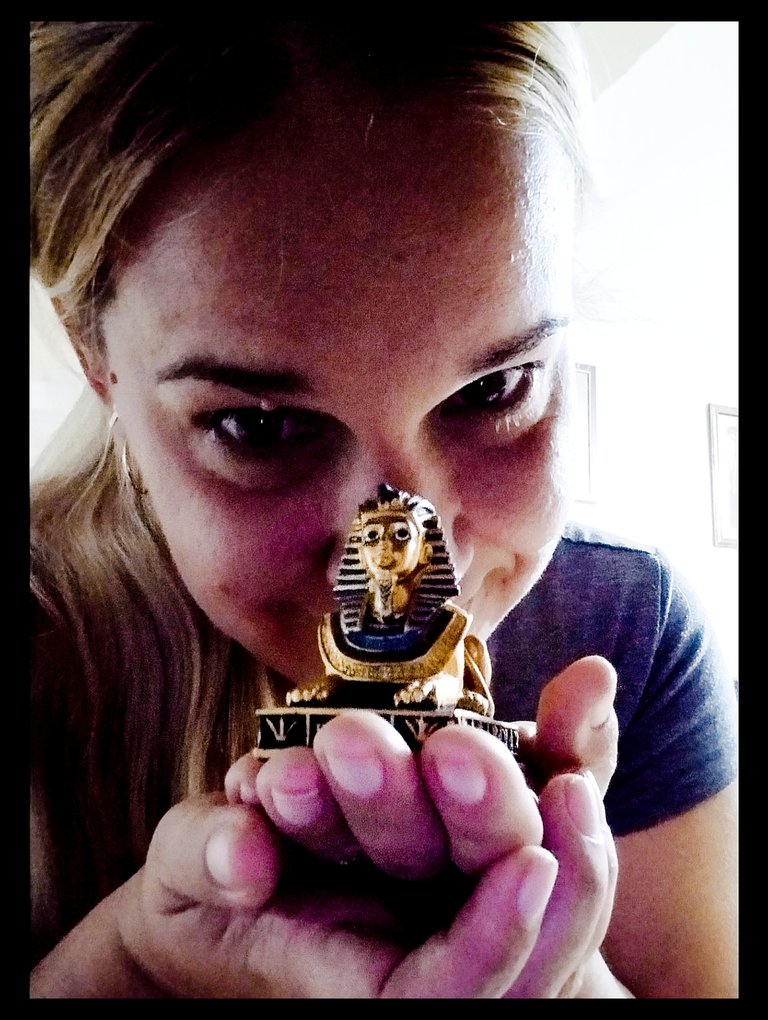
La Gran Esfinge no eligió su destino, pero nosotros sí podemos elegir cómo enfrentar el nuestro. Podemos optar por su paciencia, que no es resignación, sino sabiduría tallada en piedra.
En un mundo que premia la velocidad, ser paciente es un acto revolucionario. La paciencia nos hace guardianes de nuestro propio equilibrio y, como la Esfinge, podemos ser testigos imperturbables del caos… y sobrevivir, quizás no milenios, pero sí en paz.
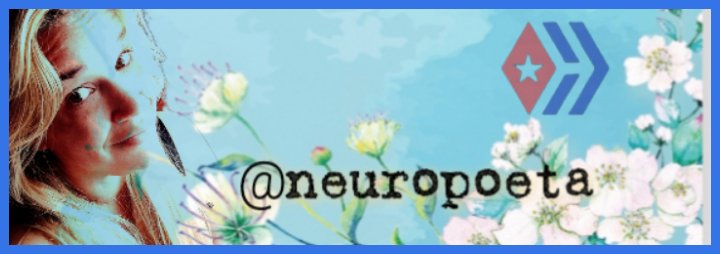
✨ ¡𝑮𝒓𝒂𝒄𝒊𝒂𝒔 𝒑𝒐𝒓 𝒍𝒆𝒆𝒓! ✨
𝑺𝒊 𝒂ú𝒏 𝒏𝒐 𝒎𝒆 𝒄𝒐𝒏𝒐𝒄𝒆𝒔: 𝒔𝒐𝒚 𝒏𝒆𝒖𝒓ó𝒍𝒐𝒈𝒂 𝒚 𝒆𝒔𝒄𝒓𝒊𝒕𝒐𝒓𝒂 𝒄𝒖𝒃𝒂𝒏𝒂, 𝒎𝒂𝒅𝒓𝒆, 𝒎𝒖𝒋𝒆𝒓 𝒚 𝒔𝒐ñ𝒂𝒅𝒐𝒓𝒂 𝒒𝒖𝒆 𝒆𝒏𝒄𝒐𝒏𝒕𝒓ó 𝒆𝒏 𝑯𝒊𝒗𝒆 𝒖𝒏 𝒉𝒆𝒓𝒎𝒐𝒔𝒐 𝒆𝒔𝒑𝒂𝒄𝒊𝒐 𝒑𝒂𝒓𝒂 𝒗𝒐𝒍𝒂𝒓.
𝑬𝒍 𝒕𝒆𝒙𝒕𝒐 𝒚 𝒍𝒂𝒔 𝒊𝒎á𝒈𝒆𝒏𝒆𝒔 𝒔𝒐𝒏 𝒅𝒆 𝒎𝒊 𝒂𝒖𝒕𝒐𝒓í𝒂, 100% 𝒉𝒖𝒎𝒂𝒏𝒐𝒔 (𝒔𝒊𝒏 𝑰𝑨).
𝑩𝒂𝒏𝒏𝒆𝒓 𝒅𝒊𝒔𝒆ñ𝒂𝒅𝒐 𝒑𝒐𝒓 𝑳𝒖𝒎𝒊𝒊.
¿𝑻𝒆 𝒈𝒖𝒔𝒕ó 𝒆𝒔𝒕𝒂 𝒑𝒖𝒃𝒍𝒊𝒄𝒂𝒄𝒊ó𝒏? 𝑽𝒐𝒕𝒂, 𝒄𝒐𝒎𝒆𝒏𝒕𝒂 𝒐 𝒓𝒆𝒃𝒍𝒐𝒈𝒖𝒆𝒂 𝒑𝒂𝒓𝒂 𝒂𝒚𝒖𝒅𝒂𝒓 𝒂 𝒅𝒆𝒔𝒑𝒍𝒆𝒈𝒂𝒓 𝒆𝒔𝒕𝒂𝒔 𝒂𝒍𝒂𝒔. 💛
ENGLISH VERSION
Craving the Sphinx’s Patience
I take advantage of the apparent calm of this weekend and the serenity that being here with you, beautiful #HolosLotus family, brings me, to look at myself in the mirror that translates time. There, in the display case, among a small art collection my sister keeps, is a shiny replica of the Great Sphinx of Giza that fits in my hand, and the serenity of that face, silent for over 4,500 years under the relentless sun and shifting sands of the Egyptian desert, comes to mind.

Something akin to envy has struck me... Who could possess the patience of the Sphinx? Not the stillness of complacency, but the strength of one who knows that some things, the truly important ones, require time, perseverance, and above all, calm in adversity.
As a pediatric neurologist, a mother, and a citizen navigating daily through the noise and haste of others, I’ve learned that patience is not passivity but active resistance, a decision not to surrender to frustration, even when the world seems intent on testing us.

In my practice, an anxious mother may repeat the same question three times: "What if the treatment doesn’t work?" Her fear is valid, and my duty is to answer with the same clarity the first or the fiftieth time. Medicine, especially with children, demands pedagogical patience. A diagnosis alone is not enough; understanding must be sown.
And so I return to the Sphinx, which does not speak, yet its presence communicates eternity. We, on the other hand, must use words until they soothe, until they heal. Here, patience is not repetition but the building of trust.

Public transportation is a thermometer of the human soul, especially when someone pushes to board first or another demands a seat. There, impatience spreads like a virus. But what do we gain by rushing?
Again, I return to the Sphinx, which has seen empires rise and fall. The pharaohs who built it are gone, yet it remains, reminding us that time is not conquered through haste but through presence. Isn’t it better to arrive late and at peace than early with a heart aflame?

My 12-year-old daughter often forgets homework, gets distracted by her phone, challenges rules, and her teachers call me worried. There, patience becomes an act of faith: trusting that boundaries set with love today will bear fruit tomorrow. I’ve always believed that teaching is like sculpting delicately, as the artists who carved the Sphinx, without brutal strikes, but with firmness.
Doctors are also patients (pardon the redundancy), for there are days when fatigue wins, when a diagnosis eludes us, or when the body simply begs for pause. The Sphinx is not ashamed of its cracks; they are marks of its history. We, however, often judge ourselves for not being infallible.

The Great Sphinx did not choose its destiny, but we can choose how to face ours. We can embrace its patience, not resignation, but wisdom carved in stone.
In a world that rewards speed, patience is a revolutionary act. It makes us guardians of our own balance, and like the Sphinx, we can stand unshaken witnesses to chaos… and survive, if not for millennia, at least in peace.

✨ 𝑻𝒉𝒂𝒏𝒌𝒔 𝒇𝒐𝒓 𝒓𝒆𝒂𝒅𝒊𝒏𝒈! ✨
𝑰𝒇 𝒚𝒐𝒖 𝒅𝒐𝒏’𝒕 𝒌𝒏𝒐𝒘 𝒎𝒆 𝒚𝒆𝒕—𝑰’𝒎 𝒂 𝑪𝒖𝒃𝒂𝒏 𝒏𝒆𝒖𝒓𝒐𝒍𝒐𝒈𝒊𝒔𝒕 𝒂𝒏𝒅 𝒘𝒓𝒊𝒕𝒆𝒓, 𝒂 𝒎𝒐𝒕𝒉𝒆𝒓, 𝒂 𝒘𝒐𝒎𝒂𝒏, 𝒂𝒏𝒅 𝒂 𝒅𝒓𝒆𝒂𝒎𝒆𝒓 𝒘𝒉𝒐’𝒔 𝒇𝒐𝒖𝒏𝒅 𝒊𝒏 𝑯𝒊𝒗𝒆 𝒂 𝒃𝒆𝒂𝒖𝒕𝒊𝒇𝒖𝒍 𝒔𝒑𝒂𝒄𝒆 𝒕𝒐 𝒔𝒐𝒂𝒓.
𝑨𝒍𝒍 𝒕𝒆𝒙𝒕 𝒂𝒏𝒅 𝒊𝒎𝒂𝒈𝒆𝒔 𝒂𝒓𝒆 𝒎𝒚 𝒐𝒓𝒊𝒈𝒊𝒏𝒂𝒍 𝒄𝒓𝒆𝒂𝒕𝒊𝒐𝒏𝒔, 100% 𝒉𝒖𝒎𝒂𝒏-𝒎𝒂𝒅𝒆 (𝒏𝒐 𝑨𝑰).
𝑩𝒂𝒏𝒏𝒆𝒓 𝒅𝒆𝒔𝒊𝒈𝒏𝒆𝒅 𝒃𝒚 𝑳𝒖𝒎𝒊𝒊.
𝑳𝒐𝒗𝒆𝒅 𝒕𝒉𝒊𝒔 𝒑𝒐𝒔𝒕? 𝑼𝒑𝒗𝒐𝒕𝒆, 𝒄𝒐𝒎𝒎𝒆𝒏𝒕, 𝒐𝒓 𝒓𝒆𝒃𝒍𝒐𝒈 𝒕𝒐 𝒔𝒑𝒓𝒆𝒂𝒅 𝒕𝒉𝒆 𝒘𝒊𝒏𝒈𝒔 𝒐𝒇 𝒄𝒓𝒆𝒂𝒕𝒊𝒗𝒊𝒕𝒚! 💛
Buenos días Yadi!!! Hay que tener la paciencia de la esfinge y la decisión de Cleopatra jjjj
... y la fuerza de Nefertiti 😉
Pues mira qué buen paralelismo has construido. Quién pudiera ser así de ecuánime y paciente como la esfinge, y no esta tormenta de arena que más a menudo somos
Pues mi amiga, hay que practicar esa ecuanimidad, no podemos seguirle el ritmo de vértigo a este mundo lleno de caos, hay que encontrarnos en la paz de la esfinge que permanece paciente 😉
Calma, Pepe, esto es con calma 🤣🤣🤣🤣
Siiiiiii, mira como me estoy reeducando ajjajajja. Preferí hablar de la paciencia y no de la traición 🤣🤣🤣🤣
Soy tu admiradora 🤣🤣🤣🤣🤣
The essay explores patience as an active resistance to frustration, not passivity, using the Great Sphinx as a metaphor. The author, a neurologist and mother, illustrates this through examples in their medical practice, public life, and motherhood, emphasizing patience as a means to build trust, find peace, and guide with love. The core message is that choosing patience in a fast-paced world is a revolutionary act that helps maintain balance and peace.
Thank you very much, my friend, for reading me calmly and uncovering the essence of my words.
A hug.
He leído con paciencia tu artículo, jjj. Me gustó. Aunque la Esfinge nunca fue muda. Enigmática sí.
No hay evidencias de que la Esfinge de Guisa en algún momento emitiera algún sonido. Claro que la mitología, las leyendas le dan todo tipo de poderes pero hablar, cantar... jamás lo hizo, o al menos pruebas no hay. Ahora bien, hablo de la paciencia, no de la mudez de la Esfinge... pero igual, ahora que hablas de voz, mañana léeme 😉
Es divertida tu respuesta, jjj. Ok, mañana leo.
@topcomment
Te leo y me encanta esa idea de la paciencia como resistencia activa (¿Acaso relacionada a la resiliencia?). Creo q algo importante es tener claridad acerca de aquello q queremos lograr, para poder manejar frustraciones, identificar las oportunidades justas y aprovecharlas.
Aprenderlo es un proceso y conocer cómo funciona nuestro cerebro (pregunta para la especialista, más q afirmación) puede ofrecernos herramientas para entrenar la paciencia. Una arista q me interesa de la psicología es como aplicar los conocimientos neurocientíficos a la vida diaria, al manejo de las emociones y su relación con la paciencia, por ejemplo. Un saludo!
Gracias, por leerme, amigo, y te digo que si hay trucos para lograr esa paciencia ansiada. Cuando te sientas impaciente, respirar profundo varias veces y eso da tiempo a tu corteza prefrontal que es la parte racional de tu cerebro a desactivar la amígdala que la responsable de las emociones, pero además puedes hacer ejercicios como la meditación que mejora la conectividad prefrontal y reduce la impulsividad. También practicar el sueño reparador es muy bueno para la paciencia... De más decirte, que en nuestras manos tenemos una de las fuentes mayores de impaciencia: lo teléfonos móviles con sus notificaciones y todo lo que encarnan...
Así que ya vas teniendo una idea...
Un abrazo enorme 🤗
Esos conocimientos son muy necesarios para la práctica diaria! Este tema me interesa mucho, por las posibilidades q tiene incluso para la práctica educativa. Creo q es necesario q los docentes, en especial los de las primeras edades conozcan los fundamentos básicos que sustentan a la neurodiversidad y puedan aplicarlos al desarrollo de los niños desde las primeras edades. Gracias por los aprendizajes. Un abrazo!
Pués si, con paciencia, que como bien dices no es pasividad, se logran las grandes cosas en esta vida.😘🌹
Así es, es paciencia pero resistiendo creativamente, para que la suerte nos agarre maquilladas y felices 😉🤭🥰
🤭☺️🌹
Congratulations @neuropoeta! You have completed the following achievement on the Hive blockchain And have been rewarded with New badge(s)
Your next target is to reach 900 comments.
You can view your badges on your board and compare yourself to others in the Ranking
If you no longer want to receive notifications, reply to this comment with the word
STOPCheck out our last posts:
Habría que ver la paciencia de quienes construyeron la efigie y de quien la ideó...
Sobre la nena, recuerda la edad que tiene jajaja... es normal ocurra en ella eso jajaja...
Y sobre el resto de tu artículo, ¡solo puedo aplaudir!
Pero no me niegues que a veces ansias tener la paciencia de una piedra para no explotar... A mí me pasa a diario🤭🤭
Lógico jajaja
Una cosa es hablar desde la distancia, como profesional... y otra es como padres en vivo jajaja....
Cuatro mil 500 años es un tiempo bárbaro, casi eterno. Sobrevivir en paz es un anhelo muy preciado.
✨🌱
...y creemos que está en paz 😉